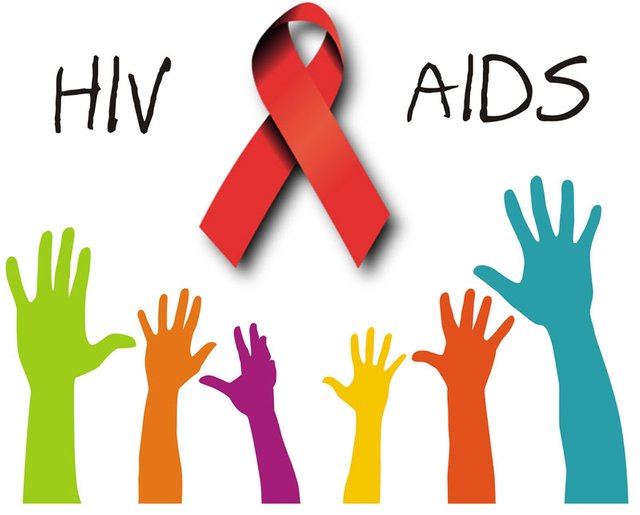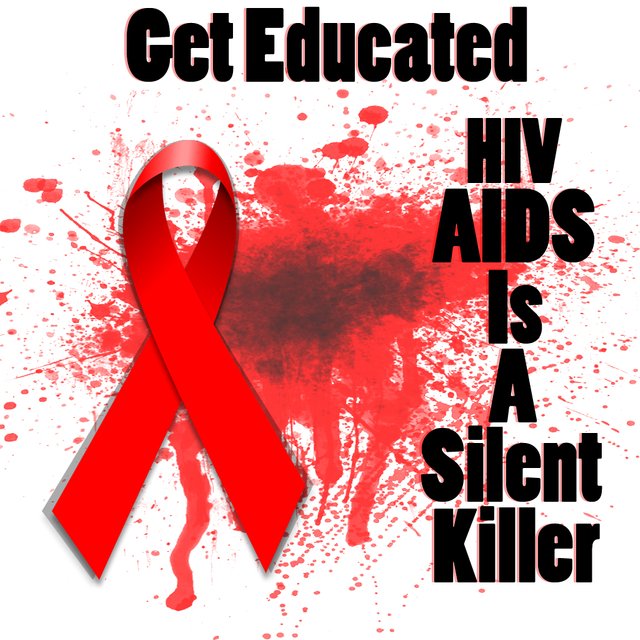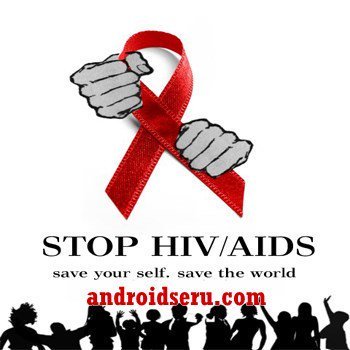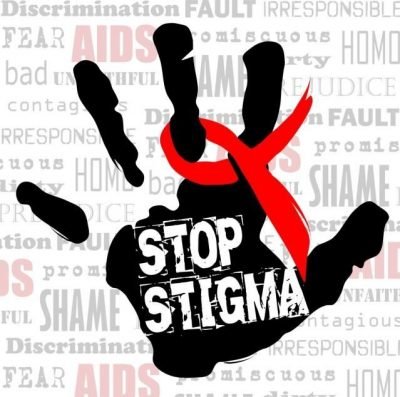All About HIV & AIDS (Must Read) ... keep it Spreading.. Informative and Educative.
HIV and AIDS ....
What is HIV?
HIV is a virus that attacks the immune system, which is our body’s natural defence against illness. The virus destroys a type of white blood cell in the immune system called a T-helper cell, and makes copies of itself inside these cells. T-helper cells are also referred to as CD4 cells.
As HIV destroys more CD4 cells and makes more copies of itself, it gradually breaks down a person’s immune system. This means someone living with HIV, who is not receiving treatment, will find it harder and harder to fight off infections and diseases.
If HIV is left untreated, it may take up to 10 or 15 years for the immune system to be so severely damaged it can no longer defend itself at all. However, the speed HIV progresses will vary depending on age, health and background.
What is AIDS?
AIDS is not a virus but a set of symptoms (or syndrome) caused by the HIV virus. A person is said to have AIDS when their immune system is too weak to fight off infection, and they develop certain defining symptoms and illnesses. This is the last stage of HIV, when the infection is very advanced, and if left untreated will lead to death.
Basic facts about AIDS
AIDS stands for acquired immune deficiency syndrome.
AIDS is also referred to as advanced HIV infection or late-stage HIV.
AIDS is a set of symptoms and illnesses that develop as a result of advanced HIV infection which has destroyed the immune system.
Treatment for HIV means that more people are staying well, with fewer people developing AIDS.
Although there is currently no cure for HIV with the right treatment and support, people with HIV can live long and healthy lives. To do this, it is especially important to take treatment correctly and deal with any possible side-effects.
Stages of the HIV life cycle
- Binding and fusion
First, the HIV virus attaches itself to a T-helper cell and releases HIV into the cell.
Drugs that can stop this part of the process are called fusion or entry inhibitors.
- Conversion and integration
Once inside the cell, HIV changes its genetic material so it can enter the nucleus of the cell and take control of it.
Drugs that can stop this part of the process are called NRTIs (nucleoside reverse transcriptase inhibitors), NNRTIs (non-nucleoside reverse transcriptase inhibitors) and integrase inhibitors.
- Replication
The cell then produces more HIV proteins that can be used to produce more HIV.
- Assembly, budding and maturation
New HIV particles are then released from the T-helper cell into the bloodstream. These are now ready to infect other cells and begin the process all over again.
Drugs that can stop this part of the process are called protease inhibitors.
Antiretroviral treatment (or ART for short) uses a number of different HIV medicines to treat HIV infection. By combining different drugs that target different steps in the HIV life cycle ART is now very effective at preventing HIV from multiplying, and enables people who are on treatment to live longer, healthier lives.
Symptoms
The symptoms of HIV and AIDS vary, depending on the phase of infection.
Primary infection (Acute HIV)
The majority of people infected by HIV develop a flu-like illness within a month or two after the virus enters the body. This illness, known as primary or acute HIV infection, may last for a few weeks. Possible signs and symptoms include:
- Fever
- Headache
- Muscle aches and joint pain
- Rash
- Sore throat
Swollen lymph glands, mainly on the neck
Although the symptoms of primary HIV infection may be mild enough to go unnoticed, the amount of virus in the bloodstream (viral load) is particularly high at this time. As a result, HIV infection spreads more efficiently during primary infection than during the next stage of infection.

In 2016, Nigeria had 220 000 (150 000 - 310 000) new HIV infections and 160 000 (110 000 - 230 000) AIDS-related deaths. There were 3 200 000 (2 300 000 - 4 300 000) people living with HIV in 2016, among whom 30% (19% - 42%) were accessing antiretroviral therapy. Among pregnant women living with HIV, 32% (22% - 44%) were accessing treatment or prophylaxis to prevent transmission of HIV to their children. An estimated 37 000 (22 000 - 56 000) children were newly infected with HIV due to mother-to-child transmission. Among people living with HIV, approximately 24% (18% - 32%) had suppressed viral loads.
The key populations most affected by HIV in Nigeria are:
Sex workers, with an HIV prevalence of 14.4%.
Gay men and other men who have sex with men, with an HIV prevalence of 23%.
People who inject drugs, with an HIV prevalence of 3.4%.
Since 2010, new HIV infections have decreased by 21% and AIDS-related deaths have decreased by 6%.
Nigeria’s HIV epidemic affects all population groups and geographic areas of the country. It is the second largest epidemic globally. Key populations are disproportionately impacted by the epidemic.
Nigeria is a Fast-Track country and its response is guided by the National Strategic Framework 2017–2021, which aims at ending AIDS by achieving zero new infections, zero AIDS related deaths and zero discrimination. Elimination of mother-to-child transmission of HIV is a priority. Stigma and discrimination is a major challenge, especially towards key populations and people living with HIV.
Causes
HIV is a viral infection that can be transmitted through sexual contact, through blood or from mother to child during pregnancy, childbirth or breast-feeding.
How does HIV become AIDS?
HIV destroys CD4 cells — a specific type of white blood cell that plays a large role in helping your body fight disease. Your immune system weakens as more CD4 cells are killed. You can have an HIV infection for years before it progresses to AIDS.
People infected with HIV progress to AIDS when their CD4 count falls below 200 or they experience an AIDS-defining complication..
Prevention
There's no vaccine to prevent HIV infection and no cure for AIDS. But it's possible to protect yourself and others from infection. That means educating yourself about HIV and avoiding any behavior that allows HIV-infected fluids — blood, semen, vaginal secretions and breast milk — into your body.
To help prevent the spread of HIV:-
Use a new condom every time you have sex. If you don't know the HIV status of your partner, use a new condom every time you have anal or vaginal sex. Women can use a female condom.
Use only water-based lubricants. Oil-based lubricants can weaken condoms and cause them to break. During oral sex use a nonlubricated, cut-open condom or a dental dam — a piece of medical-grade latex.
Consider the drug Truvada. Use of the combination drug emtricitabine-tenofovir (Truvada) can reduce the risk of sexually transmitted HIV infection in those who are at high risk. Truvada is also used as an HIV treatment along with other medications.
When used to help prevent HIV infection, Truvada is only appropriate if your doctor is certain you don't already have an HIV infection. Your doctor should also test for hepatitis B infection. If you have hepatitis B, your doctor should test your kidney function before prescribing Truvada.
Truvada must be taken daily, exactly as prescribed. Truvada should only be used along with other prevention strategies, such as condom use every time you have sex, as it doesn't protect against other sexually transmitted infections, and it can't provide complete protection against HIV transmission. If you're interested in Truvada, talk with your doctor about the potential risks and benefits of the drug.
Tell your sexual partners if you have HIV. It's important to tell anyone with whom you've had sex that you're HIV-positive. Your partners need to be tested and to receive medical care if they have the virus. They also need to know their HIV status so that they don't infect others.
Use a clean needle. If you use a needle to inject drugs, make sure it's sterile and don't share it. Take advantage of needle-exchange programs in your community and consider seeking help for your drug use.
If you're pregnant, get medical care right away. If you're HIV-positive, you may pass the infection to your baby. But if you receive treatment during pregnancy, you can cut your baby's risk significantly.
Consider male circumcision. There's evidence that male circumcision can help reduce a man's risk of acquiring HIV.

Image 1
Image 2
Image 3
Image 4
Article Reference 1
Article Reference 2
Article Reference 3
Article Reference 4
Article Reference 5
Article Reference 6
Article Reference 7

TOGETHER, WE CAN STOP HIV&AIDS...
Say NO to HIV & AIDS
Say YES to Prevention
keep spreading it across the Globe🌐

Upvote, Comment and Resteem(spread the Info).
still your able and Humble boy @gprince
Thanks for Viewing.

Very educative, Nice piece.